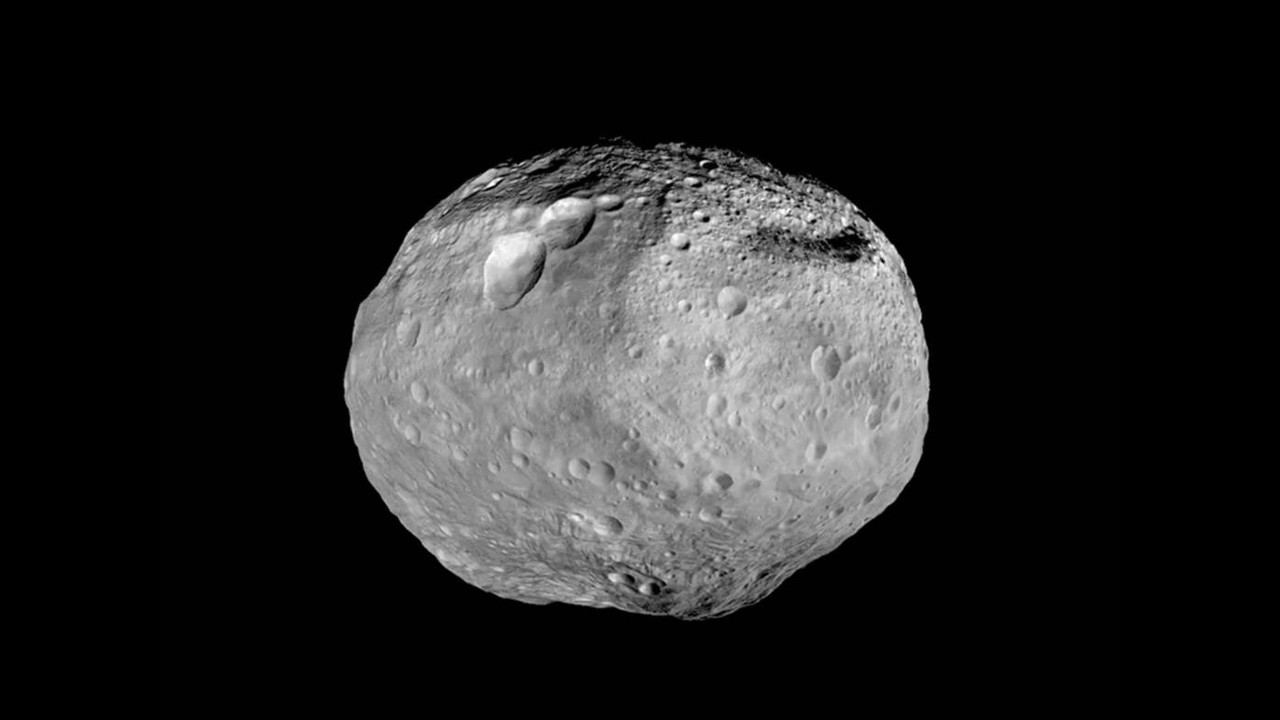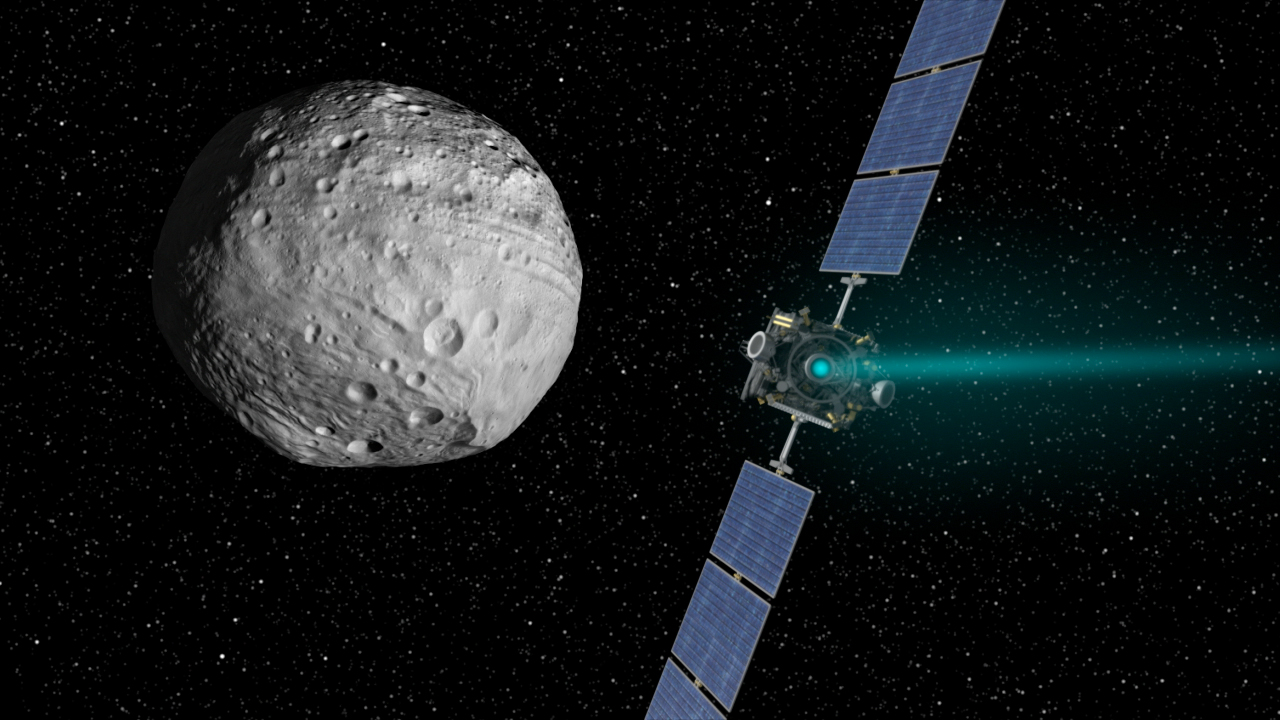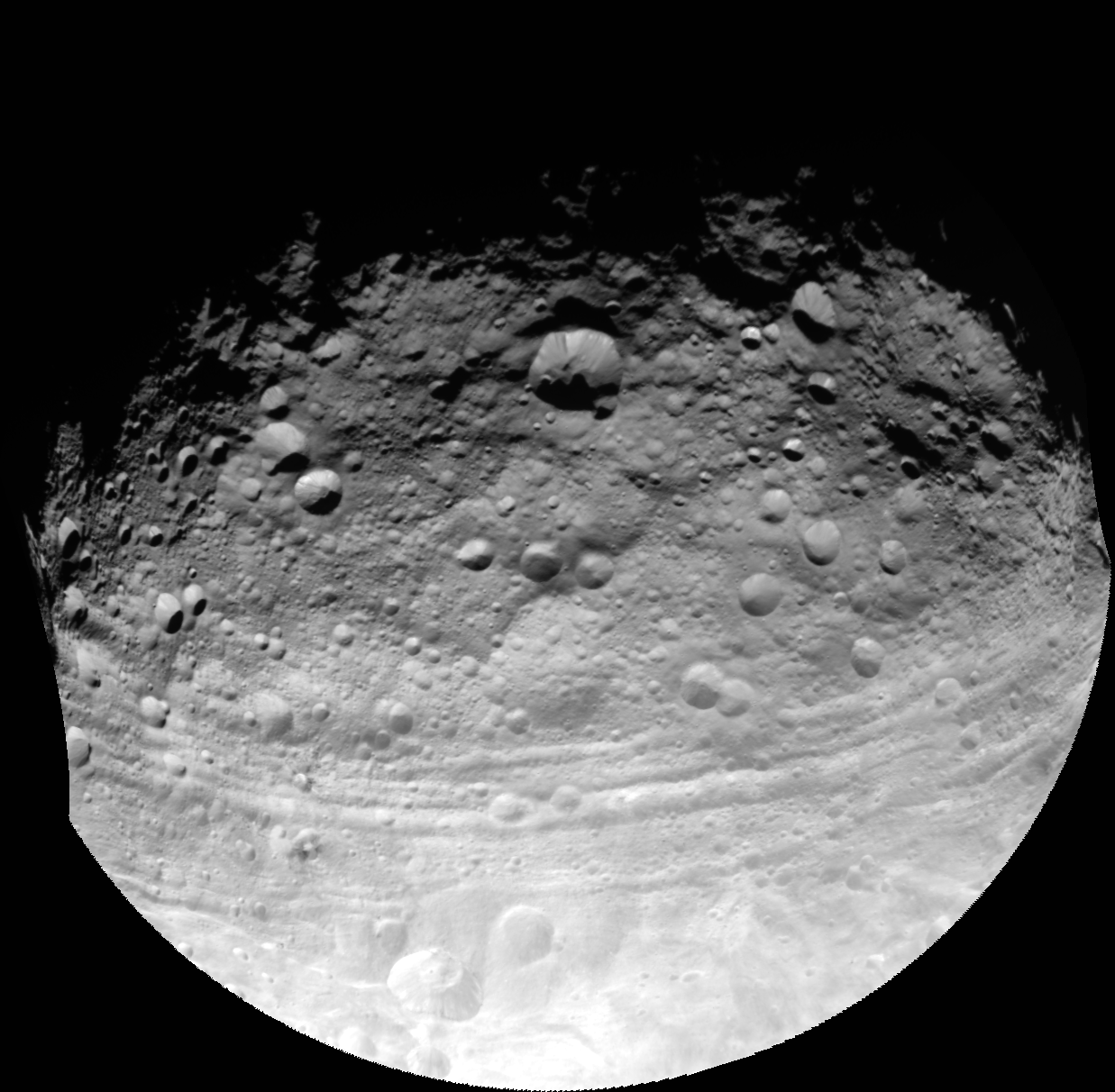Asteroid Vesta could be a fragment of a solar system planet, but which one?
An alternate explanation that fits the evidence is that Vesta was once part of a planet – but which planet that might been remains a mystery.

The asteroid Vesta could be a huge chunk of planet that was blasted off its parent world and sent spinning into space in the aftermath of a titanic collision four-and-a-half billion years ago.
That's the conclusion of researchers who have carefully mapped Vesta's gravity field and the way that the asteroid moves through space. If they're right, it puts to rest to the idea that Vesta itself is actually a stalled protoplanet. During the birth of the solar system, the planets are thought to have formed and grown through a process known as core accretion, building themselves up by sweeping up rocky debris and adding mass through collisions with other protoplanets.
Vesta had been thought to have been the last protoplanet, a leftover remnant from the early days of our solar system that never quite made it as a fully fledged planet for some reason. As the second-largest object in the asteroid belt between Mars and Jupiter, Vesta is 326 miles (525 kilometers) across. It was visited by NASA's Dawn spacecraft between 2011 and 2012, when data was collected that has now caused planetary scientists to flip-flop on the nature of Vesta.
Dawn's initial measurements of Vesta suggested that the asteroid was differentiated, or in other words, was composed of an outer crust, a mantle and a core of metal. This differentiation happens when a body is warm enough for heavy elements to sink down to the center, as happened inside Earth and the other rocky planets of the solar system.
To measure an object's internal structure, astronomers need to know its moment of inertia. Think of a spinning ice skater — when they pull their arms in they spin faster than if they hold their arms out. In the case of asteroids such as Vesta, their motion is partly dependent upon whether they contain a dense core (the ice skater with their arms pulled in) or are more homogenous (the ice skater with their arms held out).
Scientists measured Vesta's moment of inertia by performing gravity experiments. Radio signals beamed back to Earth from past Vesta are Doppler shifted by gravity, and these shifted signals were coupled with Dawn's imagery of the location of Vesta's rotational pole and its spin rate. Using these, scientists were able to model the moment of inertia and Vesta's interior structure. The original investigation in 2012 concluded that Vesta was differentiated with a distinct core. This is what led to it being described as a protoplanet — an embryonic planet.
However, these measurements are difficult to make, leaving a significant margin of error. In the years since those measurements were taken, techniques for calibrating and processing the gravity data have improved, and a revised analysis has now reached a different conclusion than in 2012: that Vesta does not contain a dense core.
Breaking space news, the latest updates on rocket launches, skywatching events and more!

"The lack of a core was very surprising," said Michigan State University's Seth Jacobson, who led the research, in a statement. "It's a really different way of thinking about Vesta."
However, these updated findings make Vesta something of a paradox. Its surface is covered in volcanic, basaltic materials. Volcanism produces heat to render the interior soft enough to allow heavier elements to sink down towards the core, but as we've seen, the gravity data tells us that has not happened. And yet, evidence from a family of meteorites known as howardite-eucrite-diogenites (HED), which were blasted off Vesta at some point in a crater-forming impact, support this volcanic interpretation. How can scientists square the widespread volcanism with the lack of differentiation?
Jacobson suggests two possibilities. One is that Vesta started undergoing differentiation, but then stopped. We know that Vesta contains volcanic rock, but perhaps there wasn't enough volcanism to keep the interior of Vesta warm long enough for it to become fully differentiated.
This idea isn't really borne out by the evidence, since the properties of the HED meteorites known to come from Vesta don't really support it.
"We're really confident these meteorites came from Vesta, and these don't show obvious evidence of incomplete differentiation," said Jacobson.

The other possibility, which is Jacobson's preferred explanation, is that Vesta itself was gouged out of a planet during a giant impact. If Vesta came from another, differentiated, world that has experienced widespread volcanism, then it would explain why Vesta contains volcanic rock but isn't differentiated itself.
It's not a new hypothesis. Jacobson had previously proposed that many meteorites that have fallen to Earth were originally part of large chunks blasted off planets by giant impacts during the chaotic early era of the solar system 4.5 billion years ago.
"This idea went from a somewhat silly suggestion to a hypothesis that we're now taking seriously due to this re-analysis of NASA Dawn mission data," said Jacobson.
If Vesta was blasted off a planet, then that also means that other asteroids could potentially be fragments that have been chipped off planets. Several missions on their way to asteroids — NASA's Psyche mission to the asteroid of the same name, the OSIRIS-APEX mission to the near-Earth asteroid Apophis, and the European Space Agency's Hera spacecraft that will visit the double-asteroid Didymos and Dimorphos, will all perform similar gravity experiments to, among other things, model their interior structure.
The findings could change what we think we know about the asteroid population.
"No longer is the Vesta meteorite collection a sample of a body in space that failed to make it as a planet," said Jacobson. "These could be pieces of an ancient planet before it grew to full completion. We just don't know which planet that is yet."
Indeed, it's possible that Vesta and its meteorites are a chip off the old block, literally, and originally came from the young Earth. Wouldn't that be something?
The findings were published on April 23, 2025 in Nature Astronomy.

Keith Cooper is a freelance science journalist and editor in the United Kingdom, and has a degree in physics and astrophysics from the University of Manchester. He's the author of "The Contact Paradox: Challenging Our Assumptions in the Search for Extraterrestrial Intelligence" (Bloomsbury Sigma, 2020) and has written articles on astronomy, space, physics and astrobiology for a multitude of magazines and websites.
You must confirm your public display name before commenting
Please logout and then login again, you will then be prompted to enter your display name.
